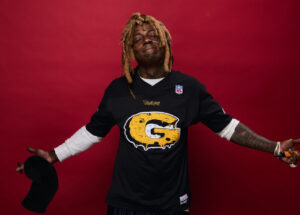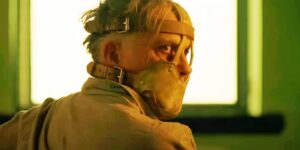Los Angeles is a city of edges—where the ocean meets the grid, where illusion meets reality, where ambition rides the horizon. And for skater Andrey Tarasov, it’s also where freedom finds its rhythm. In the fading light of LA afternoons, as the sun dips behind the hills and the air thickens with that unmistakable California haze, Andrey is exactly where he’s meant to be: pushing down a boulevard, carving through concrete, headphones in, world tuned out.
This isn’t just skating—it’s something deeper. It’s motion therapy. It’s self-expression as fluent as dance. “Those afternoons and evenings in LA when the day’s almost done can be magical for skating,” Andrey tells us. “The dusk is rolling in and the clouds are setting.” It’s the golden hour, not just for lighting, but for feeling.
This is the heartbeat of the short film captured by filmmaker Gem Hale, soundtracked by the mood-heavy electronic textures of LA trio untitled (halo). The camera trails Andrey through his home terrain—from the quiet curves of the Hollywood Hills to the grit and glow of Sunset Boulevard. It doesn’t try to glamorize the city or the skating; instead, it gives the space for a vibe to breathe. This is LA not as seen in postcards, but as felt on four wheels.
Andrey’s story begins far from this cinematic glide. His first board wasn’t a custom setup or a pro deck—it was a Scooby Doo skateboard his grandmother gave him when he was a kid. A gift born out of care, handed down without ceremony. But for Andrey, it was ignition. Skating quickly moved from a childhood hobby to a lifestyle, then an outlet, then an art. Growing up in the sprawl of LA, it became his map, his language, and his escape hatch.
“Skating has always been the way I express what I can’t say,” he explains. “There’s something about moving through the city with music in your ears that lets you step outside yourself for a minute. You’re in your body but you’re not thinking. You’re just moving.” For Andrey, the ride is both performance and release—a blur of instinct and balance, memory and muscle.
The film reflects that balance. There’s no narration, no need for exposition. Instead, the visuals tell the story in swerves and cuts: a downhill cruise lit by orange twilight, the echo of wheels on pavement, shadows growing longer as the sun drops lower. Andrey weaves through palm-lined streets like a needle through thread. Cars drift past, pedestrians appear and vanish, buildings glow briefly before disappearing into night.
Gem Hale’s lens is observant but never invasive. It lets the city breathe, lets Andrey’s movements speak for themselves. There’s no artificial drama, no forced stakes. Just the steady revelation of a person in tune with his space. The soundtrack, minimal and airy, complements the rhythm of the ride—less a score, more a pulse that syncs with the skater’s stride.
And this is what sets the film—and Andrey—apart. In a landscape oversaturated with performance, with tricks and spectacle, this is something else. It’s about flow. About connection. About that quiet, meditative zone that skaters chase but can’t always explain. Andrey doesn’t try to impress; he just rides. And in doing so, he lets the viewer into his headspace, into those lucid minutes when the outside world dissolves and everything feels in sync.
There’s a raw honesty in how he moves, how he navigates the imperfections of the city—cracked sidewalks, sudden inclines, unpredictable traffic. Every ride is a conversation with his environment. And LA, in all its chaos and sprawl, talks back. The city becomes both playground and partner, a concrete collaborator in this kinetic dialogue.
And yet, for all its movement, there’s something deeply still at the heart of the film. A quietness that comes not from silence, but from presence. Andrey isn’t skating away from something—he’s skating into himself. Each push forward is a reaffirmation of place, identity, and calm. He’s not trying to arrive anywhere. He’s already there.
The choice to feature untitled (halo) on the soundtrack is no accident. Their sound—atmospheric, layered, slightly off-center—mirrors the mental headspace of dusk skating. It isn’t trying to tell you how to feel. It just creates the conditions for feeling to happen. It blurs the line between internal and external, between background and foreground. Just like the city. Just like skating.
As the film winds down, we watch Andrey disappear into the deepening twilight. The final shot lingers—not to create suspense, but to honor the stillness after movement. The sense that something meaningful has happened, even if you can’t put your finger on it. It’s the same feeling you get after a long ride—spent, but grounded. Quiet, but wide awake.
What this editorial composition underscores is not just a portrait of a skater in his element, but a meditation on place, rhythm, and freedom. It’s a reminder that art doesn’t always need a stage, and expression doesn’t always need words. Sometimes, all it takes is wheels on pavement, a fading sky, and a song in your headphones.
In a culture obsessed with acceleration, with spectacle and noise, Andrey Tarasov’s ride through LA offers something else: a kind of moving mindfulness. A lesson in flow. A moment of ease. And in these moments, carved into boulevards and backstreets, caught between sun and night, skating becomes more than sport or hobby. It becomes a way of seeing.
eg: 2020
No comments yet.







